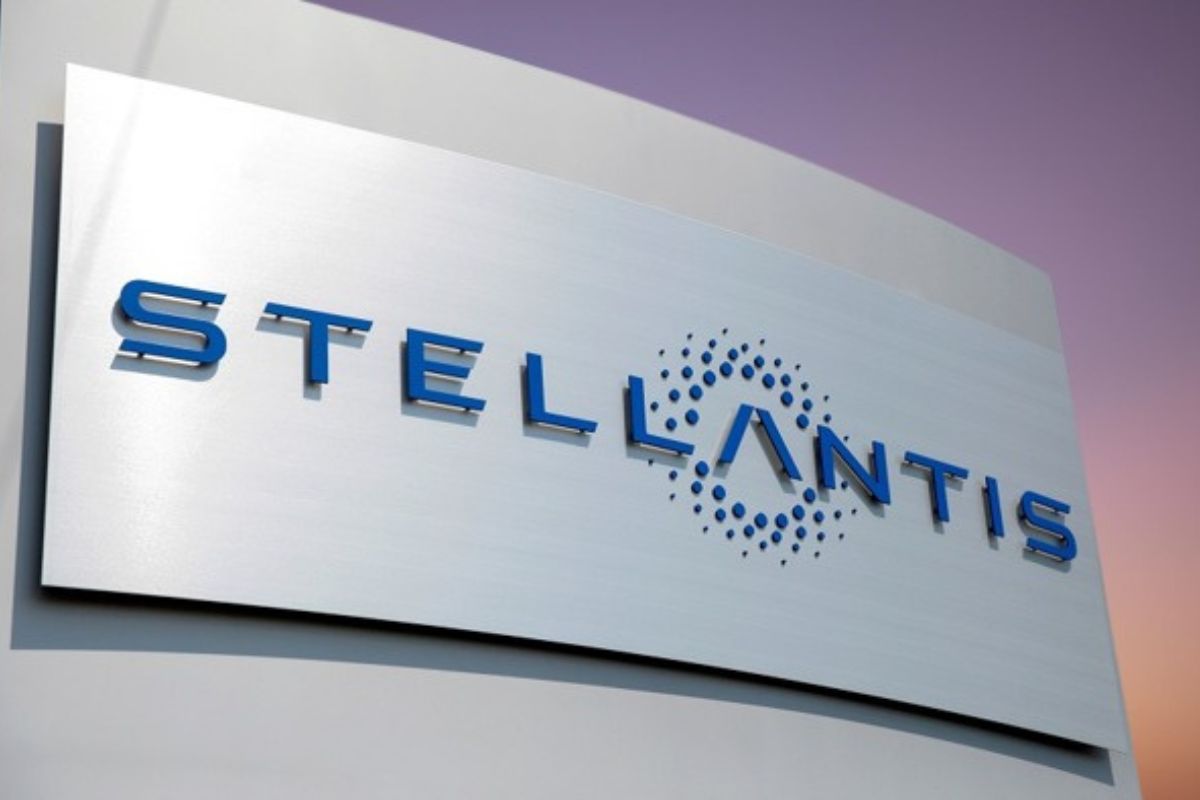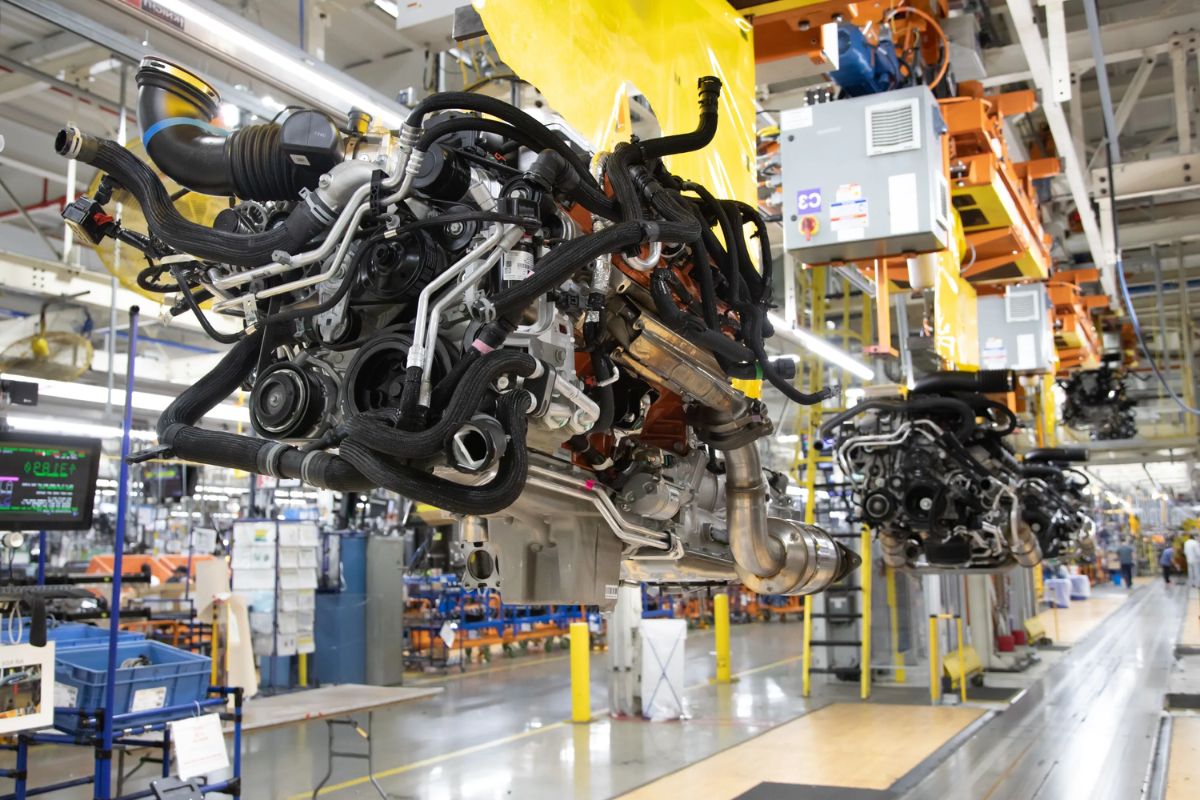Stellantis Navigates Crisis: In a bold move that has sent shockwaves through the automotive industry, Stellantis, the multinational automotive corporation, has announced 2,250 temporary layoffs at its Mirafiori plant. This decision comes as the global semiconductor chip shortage continues to wreak havoc on the production capacity of automakers worldwide.
While Stellantis claims to be navigating the crisis with a comprehensive strategy to address the semiconductor chip bottleneck, questions linger about the long-term implications of these layoffs on the company’s reputation and the automotive sector as a whole.
As the union expresses concerns and market dynamics shift, the impact of these layoffs on Stellantis and the broader industry remains uncertain.
Stay tuned as we dive deeper into this unfolding crisis.
Key Takeaways
- The global semiconductor chip shortage has had a severe impact on the production capabilities of car manufacturers worldwide, leading to temporary layoffs at Stellantis’ Mirafiori plant in Italy.
- Stellantis is closely monitoring chip availability and adjusting production schedules accordingly, while also exploring partnerships and collaborations with alternative semiconductor suppliers to diversify their supply chain.
- The temporary layoffs specifically affect the production of electric Fiat 500 and Maserati models, highlighting the vulnerability of the automotive industry to external factors.
- Stellantis’ actions and decisions during the crisis are under intense scrutiny, as they are seen as a reflection of the industry as a whole, and any shortcomings in supply chain management could impact the company’s reputation and production delays.
Also Read: Stellantis Transforms Automotive Software Development With Amazon Cloud Collaboration
Stellantis Announces Temporary Layoffs Amid Global Semiconductor Chip Shortage
Stellantis, the multinational automotive conglomerate resulting from the merger of Fiat Chrysler Automobiles and PSA Group, has announced temporary layoffs at the Mirafiori plant in Italy due to the global semiconductor chip shortage. This decision highlights the harsh reality that the automotive industry is currently facing.
The shortage of semiconductor chips has severely impacted the production capabilities of car manufacturers worldwide, leading to supply chain disruptions and financial losses. Stellantis is not alone in this struggle, as other major players in the industry have also been forced to take similar measures to mitigate the impact of the chip shortage.
This crisis serves as a wake-up call, exposing the vulnerability of the automotive sector’s reliance on a single component. It is high time for the industry to diversify its supply chain and invest in alternative technologies to avoid such disruptions in the future.
Stellantis Adopts Comprehensive Strategy to Address Semiconductor Chip Bottleneck
The global semiconductor chip shortage has forced automotive manufacturers like Stellantis to adopt a comprehensive strategy in order to address the bottleneck and safeguard their manufacturing capabilities. Stellantis recognizes the urgent need to navigate this crisis and is taking proactive measures to mitigate the impact of the shortage. Here are two key components of their strategy:
- Adjusting production schedules: Stellantis is closely monitoring the availability of semiconductor chips and making necessary adjustments to their production schedules. This allows them to optimize their resources and prioritize the production of vehicles that are in high demand.
- Exploring alternative semiconductor sources: Stellantis is actively exploring partnerships and collaborations with alternative semiconductor suppliers. By diversifying their supply chain, they can reduce their dependence on a single source and ensure a more stable and reliable supply of chips.
Stellantis’ comprehensive strategy demonstrates their commitment to overcoming the semiconductor chip bottleneck and ensuring the continuity of their manufacturing operations.
Specifics of Temporary Layoffs: Electric Fiat 500 and Maserati Models Affected
As the global semiconductor chip shortage persists, temporary layoffs have been implemented at the Mirafiori plant, impacting the production of electric Fiat 500 and Maserati models. These targeted layoffs specifically affect approximately 1,250 workers involved in the production of the electric Fiat 500 and an additional 1,000 workers manufacturing Maserati models. This focused approach aims to address the unique challenges posed by the semiconductor chip shortage, which has caused disruptions in various industries worldwide.
By temporarily reducing the workforce in these specific areas, Stellantis hopes to mitigate the negative impact of the chip shortage on its production capabilities. However, these layoffs serve as a reminder of the vulnerability of the automotive industry to external factors beyond its control, highlighting the need for long-term strategic planning and diversification to minimize future risks.
| Model Affected | Number of Workers |
|---|---|
| Electric Fiat 500 | 1,250 |
| Maserati Models | 1,000 |
Stellantis Faces Scrutiny Amidst Global Automotive Industry Crisis
Caught in the tumultuous storm of the global automotive industry crisis, Stellantis finds itself under relentless scrutiny as it grapples with the daunting challenges ahead. The company’s actions and decisions are being closely monitored by industry experts and stakeholders.
Here are two reasons why Stellantis is facing such intense scrutiny amidst the crisis:
- Market Position: Stellantis is one of the largest automotive manufacturers in the world, with a vast portfolio of brands. As a result, its performance during the crisis is seen as a reflection of the industry as a whole. Any misstep or failure on Stellantis’ part could have far-reaching implications for the entire automotive sector.
- Supply Chain Management: The semiconductor chip shortage has exposed vulnerabilities in the global automotive supply chain. Stellantis’ ability to effectively manage its supply chain and secure necessary components will be closely scrutinized. Any shortcomings in this area could lead to further production delays, impacting the company’s financial performance and reputation.
In these challenging times, Stellantis must navigate the crisis with precision and demonstrate its ability to adapt and overcome obstacles. The automotive industry is watching closely, and the stakes couldn’t be higher.
Union Concerns and Market Dynamics: Impact of Layoffs on Stellantis and the Automotive Sector
Given the recent announcement of temporary layoffs at the Mirafiori plant in Turin, Italy, concerns are mounting among unions and industry experts about the potential impact on Stellantis and the wider automotive sector.
The decision to lay off 2,250 workers, specifically those involved in the production of electric vehicles, reflects the challenges faced by Stellantis in managing subdued demand and navigating uncertainties in the market.
With weakened demand for electric vehicles, the layoffs may be seen as a strategic move to align production with market conditions. However, unions are rightfully concerned about the implications for workers and the long-term stability of the company.
This move raises questions about Stellantis’ ability to adapt to changing market dynamics and underscores the broader challenges faced by the automotive sector as it grapples with the transition to electric mobility.
The temporary layoffs at Stellantis’ Mirafiori plant due to the semiconductor chip shortage highlight the dire state of the global automotive industry. While the crisis has affected various automakers, Stellantis’ decision to halt production of electric Fiat 500 and Maserati models raises concerns about their commitment to sustainable mobility.
As the industry navigates this challenging period, it is crucial for companies to adopt comprehensive strategies and prioritize long-term solutions to mitigate the impact of such crises in the future.




